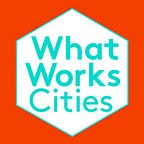Step by Step: Engaging a Community to Fight Blight
How a neighborhood on the brink and a data-informed government are finding solutions
By Ivy Gilbert
Kansas heat soaring over 100 degrees couldn’t stop neighborhood leader Karlean Kramer and other volunteers from knocking on more than 1,400 doors to talk with residents about how to prevent blight in their community.
Kramer has spent about two decades in this area of Kansas City, Kansas, known as the Park Drive neighborhood. When she moved in after college, she learned how the neighborhood had been in years prior — when electric streetcars used to connect the residents to the city proper and before interstate developments sliced through the once-cohesive residential area.
Time has changed Park Drive. The neighborhood, built over 100 years ago, is now struggling with abandoned properties, overgrown lawns, inadequate pedestrian infrastructure, stray dog populations, and other challenges that put it on the brink of falling into full-blown blight.
“It’s not that people don’t care,” Kramer shares. “It’s not that people don’t want to improve their community. It’s that they don’t know how to access the system.”
The neighborhood walk — an effort to change that through educational outreach and community engagement — is part of the Unified Government (UG) of Wyandotte County and Kansas City’s SOAR initiative, a data-driven approach to fight blight. Working with What Works Cities, the UG launched a performance management program to drive progress in the initiative and an online SOAR dashboard so that residents can see ongoing advancements for themselves.
Committed to investing in blighted areas more strategically, staff from the UG’s Community Development and Planning Departments teamed up with University of Kansas (KU) masters students to identify vulnerable neighborhoods and develop a reinvestment plan. “We spent decades pouring money into the community, and it didn’t make a substantial dent in the problem,” explains Assistant County Administrator for the UG Melissa Sieben. That’s when she and her colleagues learned that investments went further in neighborhoods on the brink than in neighborhoods that had already descended into blight.
The students from KU then identified five census tracts that were on the cusp of becoming blighted, and from there, UG staff determined which was the most at-risk by looking at data on vacancies, crime, education level, income, and employment. That tract, together with a small, surrounding buffer area, became known as the Park Drive Neighborhood, and Sieben and her colleagues got to work.
The UG invited residents as well as other local stakeholders, such as small businesses and nonprofits in the area, to community meetings. Attendees shared anxieties about the lack of walkability in the area and the general run-down state of infrastructure; as a result, updating roads and replacing worn street signs became a priority. But the central concern that emerged — that people generally felt unsafe — could be traced to the negative impact of outstanding housing code violations.
Kramer got involved when she received a postcard invitation to one of the community meetings. “I showed up as a resident who has had the same problems, who has made the same call for 21 years about a blighted house,” she recalls. As a community engagement expert for the local public school system, she knew immediately that she wanted to do more to help with the blight prevention effort once she “went and saw that it was very data-driven and that they were keen on partnering with people and giving them tools” to address concerns in the community. She started helping the UG organize the neighborhood walk. Eighty volunteers signed up, including local high school students that Kramer recruited, local stakeholders, neighborhood leaders, and UG staff members.
Equally important, Sieben and her team wanted to collect data on the state of the neighborhood during the walk. SOAR coordinator Logan Masenthin helped facilitate the development of an ESRI-powered GIS mobile app that prompted volunteers to record data about the condition of homes in the community. They also noted which residences were home to children under the age of six or over the age of 65 so that those families could receive, respectively, free lead testing or be connected to services for the aging. Information recorded in the app updated a map in real time so that volunteers knew which house to approach next.
Volunteers also distributed pamphlets in both English and Spanish that illustrate tips on preventing code violations and being a good neighbor. The City will continue its educational outreach before becoming stricter about enforcing code violations, with the goal of driving substantial decreases in the presence of blight in the years to come. The data collected during the walk paints an unbiased picture of the neighborhood that helps the UG determine how best to realize its efforts to restabilize the neighborhood by way of that enforcement as well as infrastructure improvement and maintenance.
“That’s why the data and the app are so important — we want to target our work,” says Sieben.
During the walk, volunteers also invited Park Drive residents to a community picnic the following weekend. Local businesses and nonprofits set up tables in the neighborhood park while UG staff grilled hot dogs and burgers for the families that stopped by. That afternoon, the park was filled with children playing with government officials and property owners learning more about their role in building a blight-free community.
“I think we are providing hope. We are providing an outlet for the people who have been trying to hang on in this neighborhood and really, truly don’t want it to fall over,” says Sieben. “By seeing us there, interested in their life and their outcomes, and being there and trying to provide resources, it gives them the incentive to hold on.”
Ivy Gilbert is the communications intern with What Works Cities.
